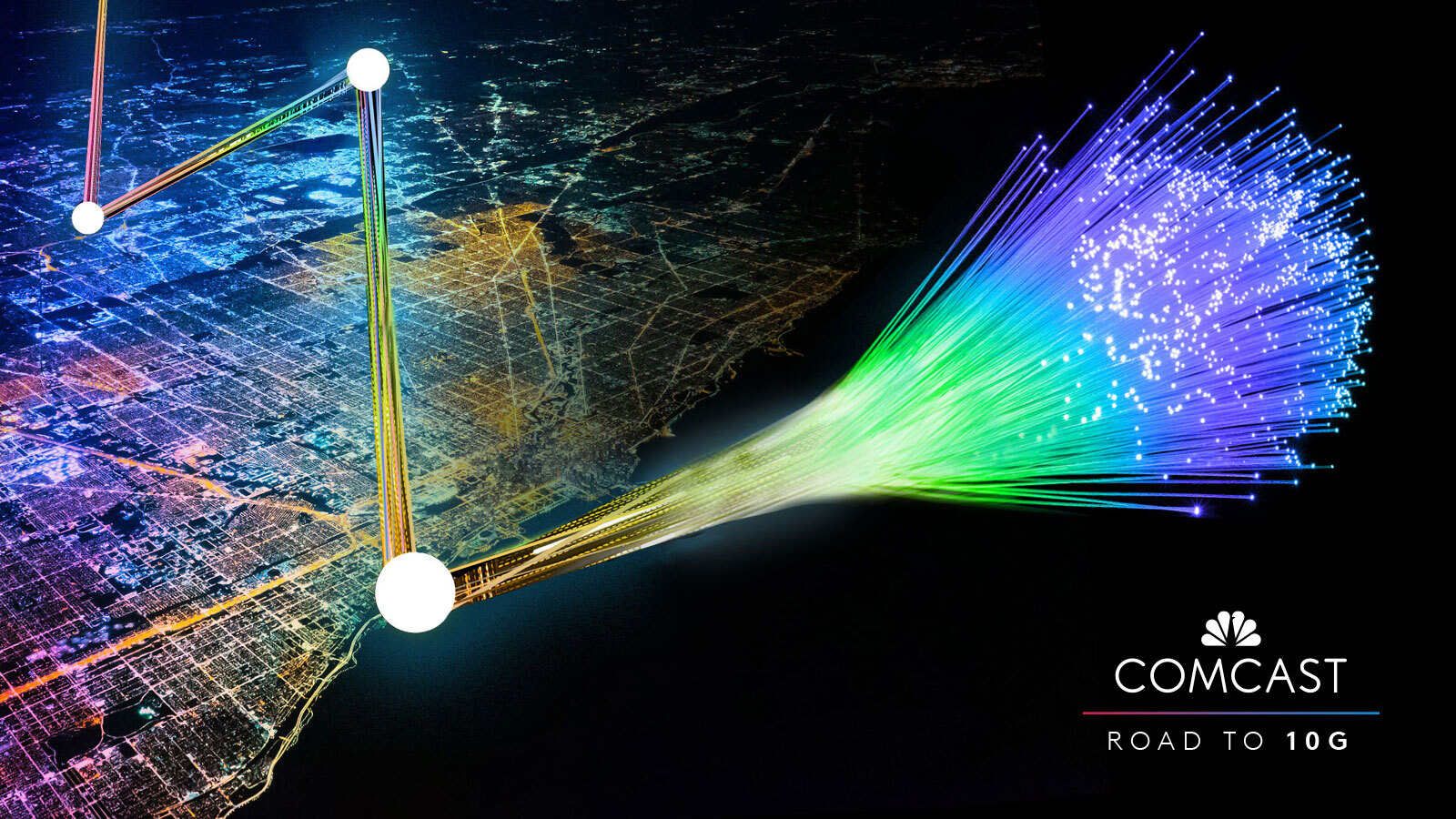Comcast: Network Traffic Hit Record Levels in 2021 But Usage Shifted Back to Pre-Pandemic Patterns
Video streaming continued to drive usage with video streaming, web browsing and gaming up 10% to 20% in all three categories

PHILADELPHIA—Comcast has issued new data on usage of its network in 2021 that provides some important insights into changing consumer habits and network usage.
Two notable takeaways for operators and streaming media providers were that traffic levels are not declining after the pandemic induced spikes of 2020 and that usage is nonetheless shifting back towards pre-pandemic patterns.
Notably, the data show a gradual shift throughout the year toward pre-pandemic traffic patterns. This included peak downstream traffic once again increasing faster than upstream traffic, and peak usage times shifting from earlier in the day to later in the evening.
Peak downstream (download) traffic increased 11 percent over 2020 levels, while peak upstream (upload) traffic increased 5 percent.
While less dramatic than the historic spikes of 2020 – when peak downstream traffic rose 38 percent and upstream traffic grew 56 percent – it is noteworthy that demand continued to increase even from historic 2020 highs.
Comcast also reported that it has invested more than $30 billion in the last 10 years to strengthen, expand and evolve the Comcast network and invested a record $4.2 billion in 2021 to handle consumer demand.
Key advances in network technology include future proofing the network, smart software and virtualization technologies along with key steps toward the next phase of the network,10G, Comcast reported.
Get the TV Tech Newsletter
The professional video industry's #1 source for news, trends and product and tech information. Sign up below.
“Over the past two years, our network has been a powerful and reliable pillar for our customers as they’ve navigated dramatic changes in how we live, learn, play and work.” said Charlie Herrin, president of technology, product, experience at Comcast Cable. “The outstanding performance of the network throughout this time is a testament to our commitment to strategic investment, unceasing innovation, and the incredible talent and dedication of our technology teams across the country.”
Key findings of the "Comcast 2021 Network Report" included:
- Evenings regained peak usage status: Peak internet usage time shifted from mid-morning in the beginning of the year to late evening by the end of the year, which of course reflects pre-pandemic patterns.
- Video streaming still drives network usage: Network consumption was driven by video streaming, web browsing and gaming – up 10-20 percent for all three categories .
- Continued network growth: Peak traffic growth continued to climb, even from record highs set in 2020.
- Peak downstream traffic increased approximately 11 percent over 2020 levels.
- Peak upstream traffic increased approximately 5 percent over 2020 levels.
- Traffic patterns remained highly asymmetrical, as peak downstream traffic grew 2x faster than upstream traffic, more closely mirroring pre-pandemic trends.
- Network asymmetry increased throughout the year, with total downstream traffic volumes 12.4x higher than upstream for the first 6 months of the year, and 14.5x higher for the last six months.
- Daily peak times shifted toward pre-pandemic norms throughout the year – peak upstream traffic times were 10am in January, 3pm in June, and 10pm in December,
- Streaming, web browsing, and gaming all saw the largest increases in network consumption with a 10-20 percent increase for all three categories.
- Similar to last year, entertainment activities dominated peak network traffic, with video streaming accounting for 71 percent of downstream traffic (same as 2020).
- Other activities that contributed to peak downstream traffic include both online gaming and web browsing which both increased their share of network usage by 1 percentage point over 2020 levels.
- Videoconferencing as a share of peak network traffic decreased slightly in 2021, remaining less than 5 percent.
Comcast also noted that even as network demand grew, Comcast increased speeds for its most popular Xfinity speed tiers in 2021, including increasing gig speeds to 1.2 gigabits-per-second.
In addition to smart software and virtualization technologies that increase performance and reliability, Comcast took major steps in 2021 toward the next phase of network evolution: 10G.
10G technology will allow Comcast to deliver multi-gigabit upload and download speeds over the connections already in tens of millions of American homes. In 2021, Comcast completed successful tests of key technologies required to deliver 10G, including a world-first demonstration of a complete 10G connection from network to modem.
“Network investment is important, but the network architects and software engineers across Comcast are also innovating at the speed of software,” said Elad Nafshi, executive vice president and chief network officer at Comcast Cable. “Our colleagues leading these innovations are creating the future for our customers.”
The full report is available here.
George Winslow is the senior content producer for TV Tech. He has written about the television, media and technology industries for nearly 30 years for such publications as Broadcasting & Cable, Multichannel News and TV Tech. Over the years, he has edited a number of magazines, including Multichannel News International and World Screen, and moderated panels at such major industry events as NAB and MIP TV. He has published two books and dozens of encyclopedia articles on such subjects as the media, New York City history and economics.

